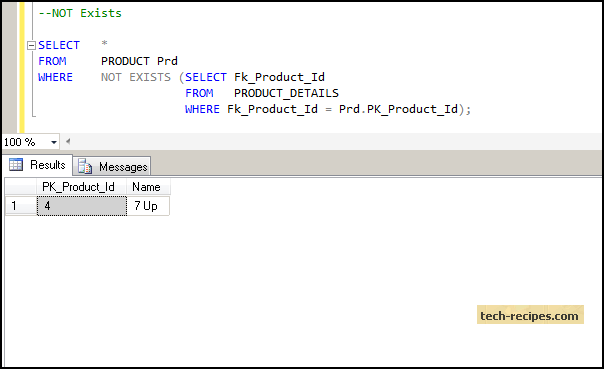Outer Joins: Joining Tables on Columns Containing NULL ValuesYou probably noticed in the RESELLER table presented earlier in this chapter that the query returns all table records except one for ACME, INC. This is because the ACME, INC. Record in the RESELLER table has NULL in the RESELLERSUPPLIERID column, so an RDBMS cannot find the corresponding value in the table you are trying to join (in this case, the other instance of RESELLER table). As the result, the query returns nine rows even though the table contains ten records. That's just the way the standard (inner) join works. Sometimes, however, you want a query to return all rows from table A and the corresponding rows from table B — if they exist.
SQL join statement to include NULL values – Learn more on the SQLServerCentral forums. I still only see the dates from the OEORDH table and no NULL values.
That's where you use outer joins. Left outer joinIn fact, the term 'left outer join' is just a convention used by SQL programmers.
You can achieve identical results using left or right outer joins as we will demonstrate later in this chapter. The whole idea behind an outer join is to retrieve all rows from table A (left) or table B (right), even though there are no matching columns in the counterpart table, so the join column(s) is NULL.

A left (or right) outer join also returns nulls for all unmatched columns from the joined table (for rows with NULL join columns only). SELECT r.reselleridn AS resid,r.resellernames AS resname,s.reselleridn AS supid,s.resellernames AS supnameFROM reseller rLEFT OUTER JOINreseller sON r.resellersupplierid = s.reselleridnRESID RESNAME SUPID SUPNAME-1 ACME, INC. NULL NULL2 MAGNETICS USA INC.

Join Two Table In Sql With Null Values Chart
1 ACME, INC3 MAGNETOMETRIC DEVICES INC. 1 ACME, INC4 FAIR PARK GARDENS 2 MAGNETICS USA INC.5 FAIR AND SONS AIR CONDTNG 2 MAGNETICS USA INC.6 FABRITEK INC. 2 MAGNETICS USA INC.7 WILE ELECTRONICS INC. 3 MAGNETOMETRIC DEVICES INC.8 INTEREX USA 3 MAGNETOMETRIC DEVICES INC.9 JUDCO MANUFACTURING INC. 4 FAIR PARK GARDENS10 ELECTRO BASS INC. 5 FAIR AND SONS AIR CONDTNG(10 rows affected)One more example. Assume we need to retrieve customer name and all order numbers for customer 152.
The following (inner) join will do. SELECT custnames,ordhdrnbrs,paytermsdescsFROM customerJOINorderheaderON custidn = ordhdrcustidfnJOINpaymenttermsON paytermsidn = ordhdrpaytermsfnWHERE custidn = 152;CUSTNAMES ORDHDRNBRS PAYTERMSDESCS-.WILE BESS COMPANY 523732 2% 15 NET 30.30 rows selected.To our surprise, the query now returns thirty rows instead of thirty one. The reason is order 523731 for WILE BESS COMPANY has NULL in the ORDHDRPAYTERMSFN column, so the row is completely excluded from the resultset if we use inner join. The solution is to use outer join. Oracle 9 iOracle did not become compliant with SQL99 syntax for outer joins until version 9 i. If you use an earlier version of Oracle, an outer join would be announced by the plus sign enclosed by parentheses, (+), placed after the table name that does not have matching rows. The query producing results identical to the previous example would be as follows:SELECT custnames,ordhdrnbrs,paytermsdescsFROM customer,orderheader,paymenttermsWHERE custidn = ordhdrcustidfnAND ordhdrpaytermsfn = paytermsidn (+)AND custidn = 152The confusion is compounded by the fact that in Oracle the join is usually called a 'right outer join' — because the (+) sign is on the right side of the = sign.
Oracle 9 iAs we mentioned in the section about left outer join, the old definition of left and right outer joins in Oracle is vague. The equivalent to the above query using the old syntax is SELECT custnames,ordhdrnbrs,paytermsdescsFROM customer,orderheader,paymenttermsWHERE custidn = ordhdrcustidfnAND paytermsidn (+) = ordhdrpaytermsfnAND custidn = 152The (+) sign has moved to the left along with the column name from the PAYMENTTERMS table ( PAYTERMSIDN) that does not have matching rows. The output is identical to what all other 'identical' queries produce; this type of join is called 'left outer join' in Oracle.NoteMany Oracle users are confused by the 'new' SQL99 outer join syntax. The problem is, they used to call an outer join 'left' or 'right' depending on what side of the equals sign, =, the outer join sign, (+), was located. The 'new' syntax takes a different approach — the term 'left' or 'right' identifies the relational position of the table from which you want to retrieve all rows, no matter if the other table that participates in the join operation has matching rows or not.
Sql Server Null In Join
Full outer joinFull outer join is the combination of left and right outer join. It returns all rows from both 'left' and 'right' tables, no matter if the counterpart table has matching rows or not. For example, in the ACME database there are some customers that did not place any orders yet — as well as some orders with no customers assigned to them.NoteAn order without a customer may sound unusual, but think of a situation in which customers A and B make very similar orders on a weekly basis.